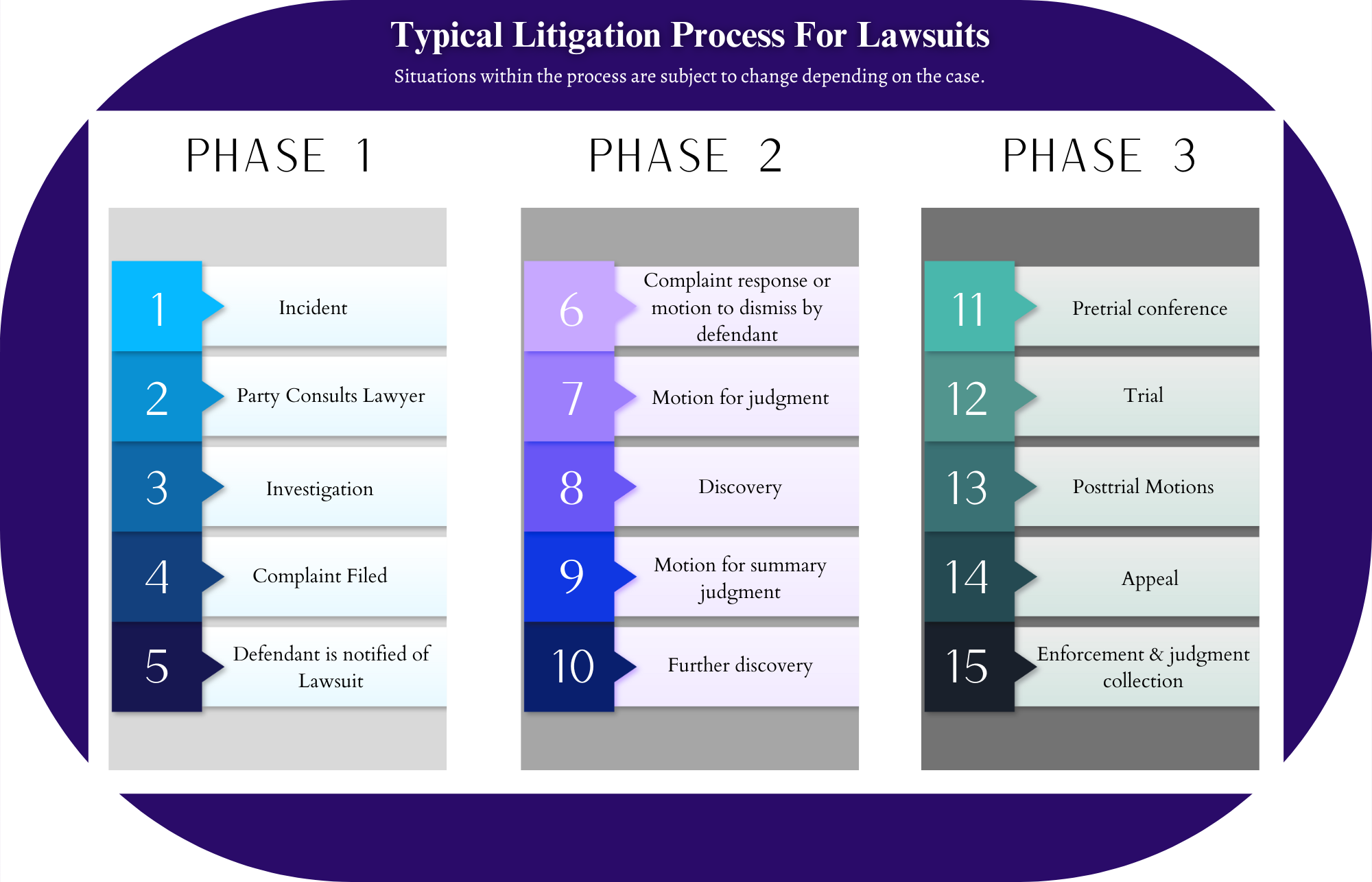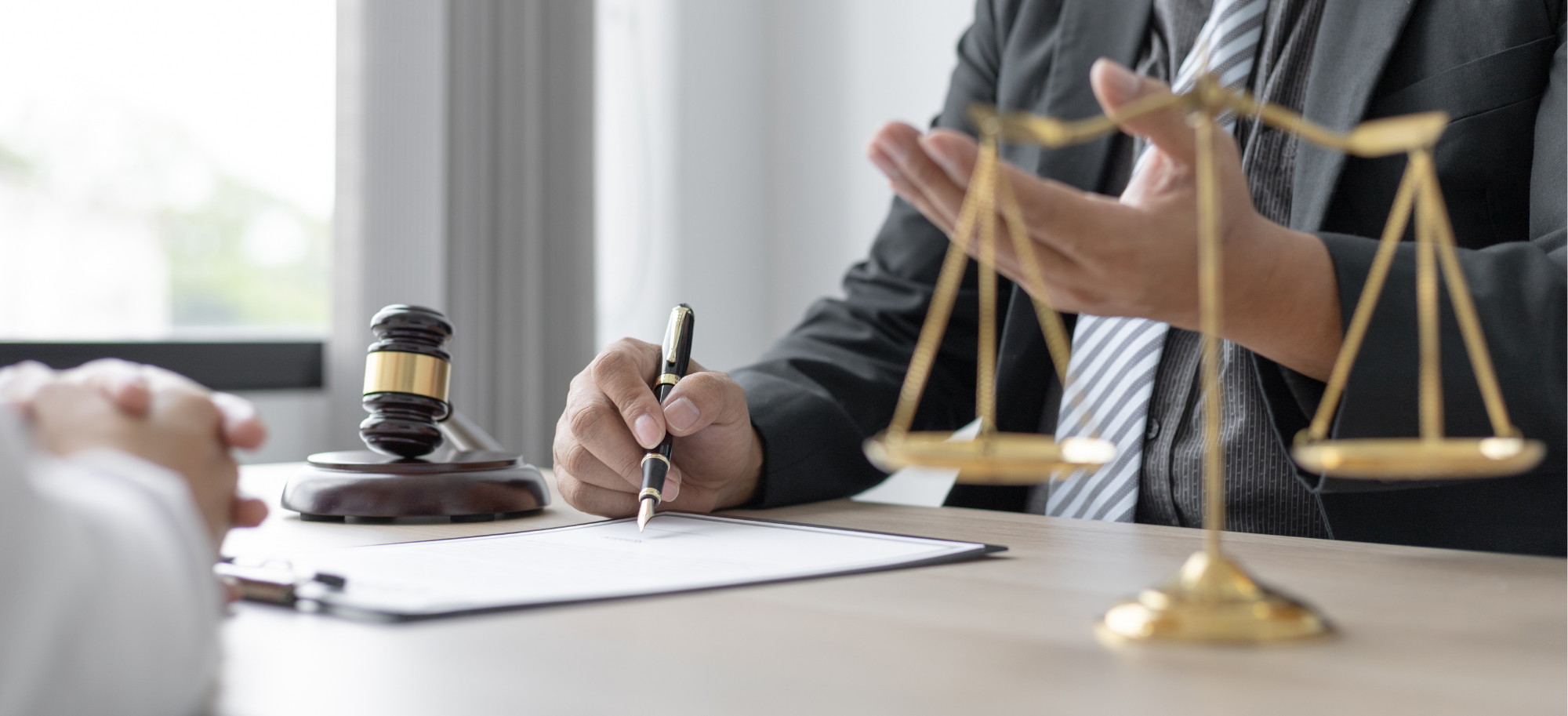Navigating The Complex Landscape of Litigation
Litigation, the process of taking legal action in a court of law, in the United States is a multifaceted legal process that carries significant financial, emotional, and logistical burdens for all parties involved. From exorbitant costs to prolonged courtroom battles, the journey through litigation can be daunting and emotionally taxing. In this article, we dive into the intricacies of litigation, examining its various facets, challenges, and alternative dispute resolution with civil mediation.
The cost of litigation comes with a hefty price tag. Legal fees, court expenses, expert witness fees, and other associated costs can quickly escalate, placing a considerable financial strain on litigants. For individuals and businesses alike, the prospect of mounting legal bills can be a deterrent to seeking justice through traditional litigation channels.
Litigation can vary significantly depending on factors such as the complexity of the case, the duration of proceedings, the jurisdiction, and the legal fees involved. Litigation costs can range from thousands to millions of dollars. Here is a breakdown of potential expenses:
Legal Fees: Legal representation is one of the most significant expenses in litigation. Attorneys typically charge by the hour, and rates can vary widely depending on the lawyer's experience, expertise, and geographic location. Complex cases requiring extensive research, document review, and courtroom appearances can result in substantial legal bills.
Court Costs: Filing fees, court reporter fees, deposition costs, and other court-related expenses can add up quickly throughout the litigation process. These costs vary depending on the jurisdiction and the specific requirements of the case.
Expert Witnesses: In cases involving complex issues or technical matters, litigants may need to retain expert witnesses to provide specialized knowledge or testimony. Expert witness fees can be significant and may include fees for consultation, preparation, and testimony.
Discovery Costs: Discovery, the process of exchanging information and evidence between parties, can entail expenses such as document production, deposition transcripts, and electronic discovery services. The cost of discovery can escalate in cases with extensive document review or electronic data processing requirements.
Trial Preparation: Preparing for trial involves various expenses, including trial exhibits, witness preparation, and travel costs for attorneys and witnesses. The costs of presenting a case in court can be substantial, particularly in lengthy or complex trials.
Appeals: A request made after a trial by a party that has lost on one or more issues for review by a higher court. If either party chooses to appeal a court decision, additional costs will be incurred for appellate briefs, oral arguments, and other expenses associated with the appellate process.
Settlement Costs: Even if a case is resolved through settlement rather than going to trial, there may still be costs associated with negotiating and finalizing the settlement agreement, including attorney fees and administrative expenses.

Overall, the cost of litigation can vary widely depending on the specific circumstances of the case and the strategies pursued by the parties involved. It is essential for litigants to carefully consider the potential financial implications of pursuing litigation and explore alternative dispute resolution methods, such as mediation, to avoid unnecessary expenses and achieve more cost-effective resolutions.
Issues in taking legal action in court can go beyond the financial burden, litigation is fraught with numerous challenges. Lengthy court proceedings, complex legal procedures, and unpredictable outcomes are just a few of the issues that litigants may encounter. Moreover, the adversarial nature of trial proceedings can exacerbate tensions between parties, hindering the possibility of an amicable resolution.
The process of litigation typically involves several stages, including pleadings, discovery, pre-trial motions, trial, and potential appeals. Each stage requires meticulous preparation, legal expertise, and resource allocation. From gathering evidence to presenting arguments in court, litigants must navigate a labyrinth of legal complexities while adhering to strict procedural guidelines.
The emotional distress of litigation can take a toll on individuals' emotional and mental well-being. The stress, anxiety, and uncertainty associated with legal proceedings can have profound effects on mental health and overall quality of life. According to a study by the Nation Library of Medicine (NIH) on The Effects of The Justice System on Mental Health. The study assessed the psychological effects on subjects from Spain, South Korea, and the United States for both defendants and plaintiffs. Their findings suggest that plaintiffs were more susceptible to cognitive reactance, anxiety, paranoid ideation, psychoticism, and a negative outlook on life due to the ‘legal harassment’ and institutional abuse sometimes displayed in court[1]. For many litigants, the emotional distress of litigation is compounded by the fear of facing judgment, reputational damage, and the prospect of a protracted legal battle. ([i] The effects of the justice system on mental health - PMC (nih.gov))
One of the inherent drawbacks of legal battles is the loss of privacy. Court proceedings are typically a matter of public record, exposing sensitive information (like emails and financial statements) and personal details. Litigants may find themselves thrust into the spotlight, subject to invasive inquiries and public scrutiny, further exacerbating the emotional strain of litigation.

Litigation encompasses a wide range of legal disputes, including civil, criminal, commercial, and employment-related matters. Whether it is a breach of contract, personal injury claim, or criminal prosecution, litigants must navigate the specific intricacies of their cases within the framework of applicable laws and regulations. For both plaintiffs and defendants, litigation presents unique challenges and considerations. Plaintiffs bear the burden of proving their case and must withstand rigorous scrutiny from opposing counsel. Defendants, on the other hand, must mount a robust defense strategy to counter allegations and protect their rights. Regardless of their position, both parties face the arduous task of navigating the legal system and advocating for their interests.
The prospect of litigation can be intimidating. Threats of legal action may be used as leverage to coerce settlements or intimidate opponents into capitulating. For many individuals and businesses, the specter of trial looms large, casting a shadow of uncertainty and apprehension over their affairs.
The success rates of litigation vary widely depending on several factors, including the type of case, the strength of evidence, the effectiveness of legal representation, and the specific jurisdiction in which the case is heard. It is challenging to provide a definitive answer regarding the overall win-loss ratio for litigants, as it can differ significantly from case to case and across different areas of law.
In civil litigation, for example, the Bureau of Justice (BOJ) Statistics Special Report: Civil Justice Survey of State Courts, 2005 suggests that plaintiffs win almost 60% of cases that go to trial, while defendants prevail in the remaining cases. The median damages won by plaintiffs in general civil trials was $28,000 with only 5% of punitive damages being awarded out of the 7.4 million civil claims filed[ii]. However, settlement rates are much higher, with the vast majority of civil cases being resolved through negotiated settlements rather than going to trial. ([ii] Civil Bench and Jury Trials in State Courts, 2005 (ojp.gov))
In criminal cases, the prosecution tends to have a higher success rate, with conviction rates varying depending on the severity of the charges and the strength of the evidence presented. However, the outcome of criminal trials can also be influenced by factors such as jury composition, witness credibility, and the effectiveness of defense strategies.
Overall, the outcome of litigation is highly contingent on the specific circumstances of each case and the legal strategies employed by both parties. While some litigants may emerge victorious, others may face unfavorable outcomes or opt for settlement to avoid the uncertainties and costs associated with protracted litigation.
Amidst the complexities and challenges of litigation, civil mediation offers a compelling alternative. Unlike litigation, which puts adversaries against each other in a contentious courtroom battle, mediation promotes collaboration, communication, and compromise. A neutral mediator facilitates constructive dialogue between parties, guiding them toward mutually acceptable resolutions. By avoiding the adversarial nature of litigation, civil mediation offers a more efficient, cost-effective, and emotionally satisfying means of resolving disputes.
In conclusion, litigation in America is a complex and demanding process fraught with challenges and uncertainties. From exorbitant costs to emotional distress, the journey through litigation can be arduous for all involved. However, civil mediation provides a viable alternative that prioritizes cooperation, communication, and consensus-building. By embracing the principles of mediation, parties can bypass the pitfalls of litigation and achieve equitable resolutions that uphold their interests while preserving their dignity and well-being.